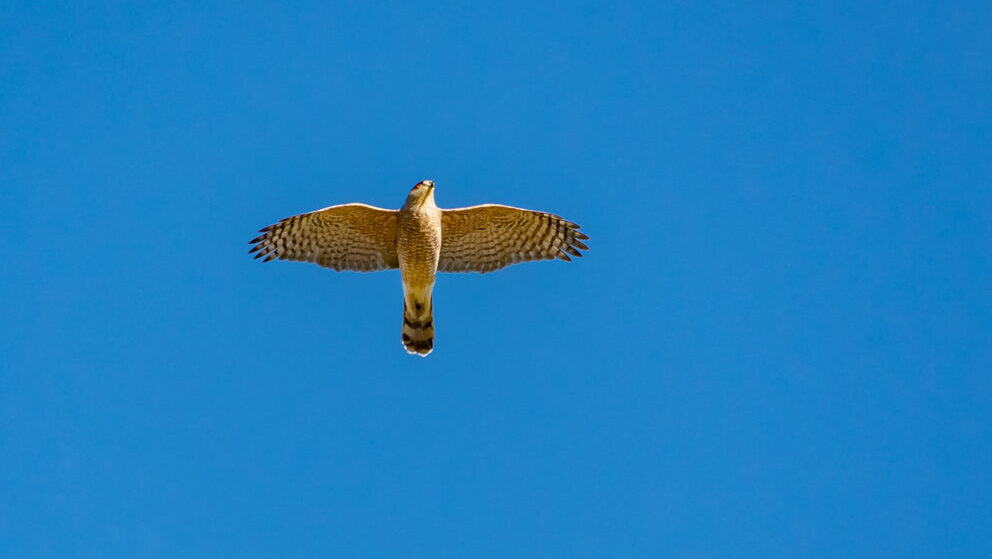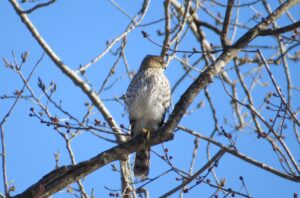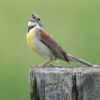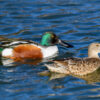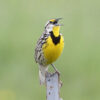Cooper’s Hawk, Accipiter cooperii
Bill Rowe
In November, we described a prototypical big hawk of the genus Buteo—the Red-tail. This week we look at a member of Accipiter, a world-wide genus of raptors that used to be saddled with adjectives like “stealthy” and “vicious,” simply because they have evolved to catch and eat other birds by twisting and turning through the trees and relying on the element of surprise. Thinking of them as somehow bad doesn’t really make any sense, though, since every organism eats something. If we loved little insects as much as we do our feeder birds, every warbler would seem bloodthirsty! But there we are, and it may require some tolerance when a Cooper’s Hawk (our common year-round accipiter) visits our yard in search of a meal. This is certainly a common occurrence nowadays, as the Cooper’s is one of several raptors that have increased in numbers and spread from the countryside into suburbs and cities over the past several decades. They can be around and yet hardly noticeable until, perhaps, your eye catches a long-tailed form skimming through the yard just above ground level, or perching quietly in a nearby tree to keep watch. In North America we have two other accipiters, the big Northern Goshawk (a rarity in Missouri) and the Sharp-shinned Hawk, a smaller species that visits us as a regular migrant and winter bird but seldom nests here.
IDENTIFICATION: Cooper’s Hawk is about the size of a crow (the female) or a bit smaller (the male); it is the middle-sized accipiter, with a long tail, rounded wings, and a protruding head that may look slightly crested. Its flight consists of rapid flaps with brief sailing or coasting in between. Adults are blue-gray above and barred reddish below; juveniles are brown with white, streaked underparts and keep this plumage for a full year before molting into their first adult feathering. The Sharp-shinned Hawk is very similar in shape and colors and can be hard to separate from Cooper’s. If your bird is small, e.g., the size of a Blue Jay, you can safely call it a Sharp-shin; close to crow-size, a Cooper’s; and in between, send us a photograph and we’ll try to help! (There are too many small differences to explain here.)
ST. LOUIS STATUS: A fairly common hawk year-round, and the only accipiter you’ll see in the summer.
Learn more and listen to the calls of Cooper’s Hawks here.
Juvenile; note rounded tail, fine sharp streaks, hint of a crest on the head
Photo Credit: Bill Rowe
Adult in flight, with long rounded tail

